Iron Maiden just rereleased all of their modern-era albums on fancy 180 gram vinyl and I’ve dropped a ton of dough to collect every single one. While the ’90s and new millennium were definitely a time of change for the greatest metal band of all time, it was also an era of musical reinvention (more than once), a new frontman and some of the band’s most engaging work.
The recent vinyl reissues replace the kinda recent picture discs that sounded awful and cost way too much. The first round of early Maiden records came out a year ago with a fancy box set and they must have done well enough to justify another round of later albums (and another box to put them in). Many of these albums were never released on vinyl in the U.S. or in very limited quantity (considering no one was buying records in the late ’90s). Maiden also released a plethora of live albums during the last 17 years, most of which is included in the reissues.
Below is a ranking of every studio album released between 1990 and 2015 and info about any companion live albums that were released around the same time (if there was one). While definitive, this ranking is strictly my opinion and might not reflect the general world view of Iron Maiden. Feel free to argue me or tell me why I’m insane in the comments. Up the Irons!
 9. X-Factor (1995) Regardless of what you think of Iron Maiden’s decision to continue without Bruce Dickinson or their choice of Blaze Bayley as his replacement, you have to give the band credit for keeping the spirit of Maiden alive during a time when metal was definitely dead. The biggest problem with X-Factor is that it’s a chore to sit through. For every good song, like “Sign of the Cross,” you have to sit through a boring slog like “The Unbeliever.” The album is also the band’s darkest. Whatever depression Steve Harris was going through at the time was clearly evident in the tone of the record.
9. X-Factor (1995) Regardless of what you think of Iron Maiden’s decision to continue without Bruce Dickinson or their choice of Blaze Bayley as his replacement, you have to give the band credit for keeping the spirit of Maiden alive during a time when metal was definitely dead. The biggest problem with X-Factor is that it’s a chore to sit through. For every good song, like “Sign of the Cross,” you have to sit through a boring slog like “The Unbeliever.” The album is also the band’s darkest. Whatever depression Steve Harris was going through at the time was clearly evident in the tone of the record.
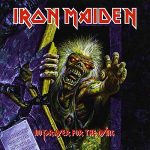 8. No Prayer for the Dying (1990) is a tough album to love, mostly because Maiden went more rock and roll (possibly to compete with contemporaries like GNR and Metallica) and lost their power-metal heart. Yes, the record includes “Holy Smoke” (a personal favorite) and “Bring your Daughter to the Slaughter” (odd and awesome), but the rest of the album is mostly forgettable.
8. No Prayer for the Dying (1990) is a tough album to love, mostly because Maiden went more rock and roll (possibly to compete with contemporaries like GNR and Metallica) and lost their power-metal heart. Yes, the record includes “Holy Smoke” (a personal favorite) and “Bring your Daughter to the Slaughter” (odd and awesome), but the rest of the album is mostly forgettable.
 7. Virtual XI (1998) will always hold a place in my heart as it was the first Maiden album that I experienced with my wife after we started dating. The two of us were working at Sam Goody and got tickets to go to the record release party at Lazer Storm in NYC. Long story short, we got to shoot other Maiden fans with laser guns while listening to the record on a loop. Members of Maiden watched on from an eagle’s perch above the arena as we made idiots of ourselves. I also won a giant, signed 3D poster of the album cover. Virtual XI is a fast, tight post-metal Maiden album with a good amount of catchy songs that I still find myself humming. Yes, it isn’t a Dickinson album, but it isn’t a bad album either.
7. Virtual XI (1998) will always hold a place in my heart as it was the first Maiden album that I experienced with my wife after we started dating. The two of us were working at Sam Goody and got tickets to go to the record release party at Lazer Storm in NYC. Long story short, we got to shoot other Maiden fans with laser guns while listening to the record on a loop. Members of Maiden watched on from an eagle’s perch above the arena as we made idiots of ourselves. I also won a giant, signed 3D poster of the album cover. Virtual XI is a fast, tight post-metal Maiden album with a good amount of catchy songs that I still find myself humming. Yes, it isn’t a Dickinson album, but it isn’t a bad album either.
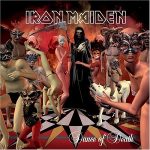 6. Dance of Death (2003) had the unfortunate task of following up Brave New World, Maiden’s near-flawless reunion record. The album is darker than BNW and does its best to be musically relevant for younger fans while staying true to the soul of Iron Maiden. The galloping bass makes way for a more traditional metal sound with songs like “Rainmaker” and “Paschendale” coming off like modern-day rock anthems. Not that that’s a bad thing. The title track is the hands down best song on here, featuring a majestic three-minute intro that explodes into a ferocious waltz. It’s a brilliant feat of songwriting that highlights why Maiden is untouchable in metal and music.
6. Dance of Death (2003) had the unfortunate task of following up Brave New World, Maiden’s near-flawless reunion record. The album is darker than BNW and does its best to be musically relevant for younger fans while staying true to the soul of Iron Maiden. The galloping bass makes way for a more traditional metal sound with songs like “Rainmaker” and “Paschendale” coming off like modern-day rock anthems. Not that that’s a bad thing. The title track is the hands down best song on here, featuring a majestic three-minute intro that explodes into a ferocious waltz. It’s a brilliant feat of songwriting that highlights why Maiden is untouchable in metal and music.
The tour album, Death on the Road (2005), only spotlights a handful of Dance of Death songs, focusing instead on the classics and a lone Blaze Bayley song, “Lord of the Flies.” The live version of “Dance of Death” is the definitive version of the song and the one I go to first when I want to get my death waltz on.
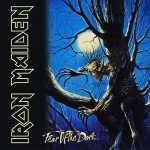 5. Fear of the Dark (1992) includes Iron Maiden’s most famous song and a staple of their live sets. What some fans forget is that “Fear of the Dark” also opens with the band’s most brutal salvo of songs — “Be Quick or be Dead,” “From Here to Eternity” and “Afraid to Shoot Strangers” — blasted into your brain in quick succession and with no room to breathe. That said, the rest of the album is a mixed bag of forgettable songs and so-so lyrics. But the title track still sends shivers up my spine every time I hear it.
5. Fear of the Dark (1992) includes Iron Maiden’s most famous song and a staple of their live sets. What some fans forget is that “Fear of the Dark” also opens with the band’s most brutal salvo of songs — “Be Quick or be Dead,” “From Here to Eternity” and “Afraid to Shoot Strangers” — blasted into your brain in quick succession and with no room to breathe. That said, the rest of the album is a mixed bag of forgettable songs and so-so lyrics. But the title track still sends shivers up my spine every time I hear it.
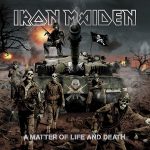 4. A Matter of Life and Death (2006) is a strange Iron Maiden album, not because of the quality, but because it is almost forgotten in the canon of Maiden. It came out with little fanfare and is mostly remembered for an album tour that featured the band playing the record front-to-back. Maiden has not done that since and probably won’t do that again. And while MoLaD charted in the top 10 in the U.S., it only recently appeared on Spotify and received its first State-side vinyl pressing this year. That said, the album is pure Maiden with a good chunk of classic metal songs alongside the more prog music that the band has focused on in recent years. The only ding is the last side, which meanders under the weight of two tracks that come in at more than nine minutes.
4. A Matter of Life and Death (2006) is a strange Iron Maiden album, not because of the quality, but because it is almost forgotten in the canon of Maiden. It came out with little fanfare and is mostly remembered for an album tour that featured the band playing the record front-to-back. Maiden has not done that since and probably won’t do that again. And while MoLaD charted in the top 10 in the U.S., it only recently appeared on Spotify and received its first State-side vinyl pressing this year. That said, the album is pure Maiden with a good chunk of classic metal songs alongside the more prog music that the band has focused on in recent years. The only ding is the last side, which meanders under the weight of two tracks that come in at more than nine minutes.
 3. The Book of Souls (2015) was stalled due to Bruce Dickinson’s cancer treatment and the wait was more than worth it. Yes, Souls solidifies the fact that Maiden is no longer a metal band, but a prog rock group trapped in the body of aging metal gods. Not that you can tell by their live shows. “Tears of a Clown,” “Speed of Light,” “The Red and the Black” and “Death or Glory” are prime examples of why Iron Maiden can span four decades and still be relevant. Add the masterpiece that is “Empire of the Clouds” and you have an album that can’t be defined by genres and a band that will retire when they’re dead.
3. The Book of Souls (2015) was stalled due to Bruce Dickinson’s cancer treatment and the wait was more than worth it. Yes, Souls solidifies the fact that Maiden is no longer a metal band, but a prog rock group trapped in the body of aging metal gods. Not that you can tell by their live shows. “Tears of a Clown,” “Speed of Light,” “The Red and the Black” and “Death or Glory” are prime examples of why Iron Maiden can span four decades and still be relevant. Add the masterpiece that is “Empire of the Clouds” and you have an album that can’t be defined by genres and a band that will retire when they’re dead.
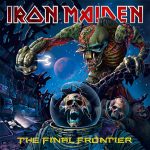 2. The Final Frontier (2010) was falsely considered Maiden’s last album due to the unfortunate title, but that’s about the only thing wrong with the record. Final Frontier is a true amalgamation of new and old Iron Maiden and proves why the band can stand the test of time and still sell out arenas across the world. My favorite songs on here are the ones that sound nothing like Maiden. “Coming Home” is an ear worm that can’t be expunged, telling the tale of traveling the world and returning home to Britain. It is so much better than Motley Crue’s “Home Sweet Home.” Maiden is at their best when they record long-ass songs that don’t drone on and on, such is the case with “When the Cold Wind Blows,” an 11-minute operatic masterpiece that touches on every style Maiden has ever performed.
2. The Final Frontier (2010) was falsely considered Maiden’s last album due to the unfortunate title, but that’s about the only thing wrong with the record. Final Frontier is a true amalgamation of new and old Iron Maiden and proves why the band can stand the test of time and still sell out arenas across the world. My favorite songs on here are the ones that sound nothing like Maiden. “Coming Home” is an ear worm that can’t be expunged, telling the tale of traveling the world and returning home to Britain. It is so much better than Motley Crue’s “Home Sweet Home.” Maiden is at their best when they record long-ass songs that don’t drone on and on, such is the case with “When the Cold Wind Blows,” an 11-minute operatic masterpiece that touches on every style Maiden has ever performed.
En Vivo! (2012) is my favorite Iron Maiden live album and I’ll probably get flogged for admitting that, but it’s true. Steve Harris has stated that he is obsessed with getting the crowd mix perfect on live records and En Vivo! nails it to perfection. The sing-alongs punctuate every song and the versions of the newer tracks are better than the originals. This really is the greatest hits of the last three decades of Iron Maiden and one of my favorite Maiden records.
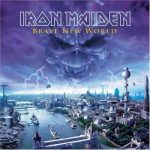 1. Brave New World (2000) was a light at the end of the tunnel for Maiden fans that hated the Blaze Bayley albums and longed for a reunion with Bruce Dickinson. Not only did Dickinson rejoin his brothers, but brought Adrian Smith back to the fold. The album that followed was the most upbeat Maiden album to date and featured a mix of fast and furious numbers like “The Mercenary” and “The Wicker Man” mixed along side sweeping epic tunes like “Dream of Mirrors,” “Ghost of Navigator” and “Brave New World.” A highlight is “Blood Brothers,” a flawless waltz and the band’s greatest singalong since “Fear of the Dark.”
1. Brave New World (2000) was a light at the end of the tunnel for Maiden fans that hated the Blaze Bayley albums and longed for a reunion with Bruce Dickinson. Not only did Dickinson rejoin his brothers, but brought Adrian Smith back to the fold. The album that followed was the most upbeat Maiden album to date and featured a mix of fast and furious numbers like “The Mercenary” and “The Wicker Man” mixed along side sweeping epic tunes like “Dream of Mirrors,” “Ghost of Navigator” and “Brave New World.” A highlight is “Blood Brothers,” a flawless waltz and the band’s greatest singalong since “Fear of the Dark.”
The follow-up live album, Rock in Rio (2002), included a bevy of old hits and key tracks from Brave New World. Fans bitched about having Dickinson sing Bayley songs, but I thought it was great to see how Bruce handled tracks that weren’t written for him, much like how I love how Dio sings “Paranoid” or “War Pigs.” The accompanying DVD was also the band’s first digital video and featured a brilliant 5.1 mix. In 2002, that was considered mind blowing.
Bonus: Flight 666 (2009) served as both the soundtrack to the documentary of the same name and the tour album for Somewhere Back in Time. It is a melding of Powerslave, Somewhere In Time and Seventh Son of a Seventh Son and the only time the band performed “Rhyme of the Ancient Mariner” in the modern era. Add in “Aces High,” “Moonchild” and “Revelations” and you have a classic live album that is definitely worth picking up. What’s more, the documentary is a flawless look into the lives of an aging rock and roll band that is still kicking ass and flying around the world on their own plane, piloted by their lead singer. Rather than turn into a joke, they continue to adapt and create brilliant music for generation to come. Go watch it now.


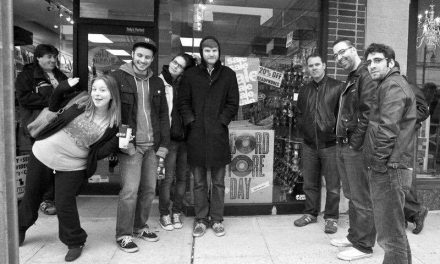
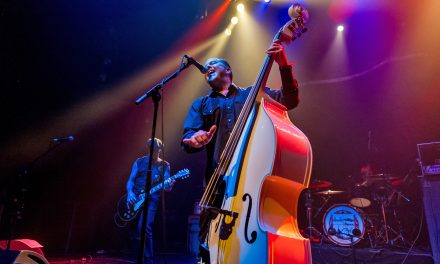

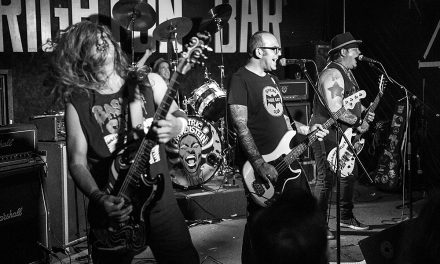
With all due respect, you need to listen to X Factor again. It’s somber in tone, yes, but that was the point.
Harris was in that kind of space after Bruce and Adrian left. The album that followed as a result is darker and more introspective than any other Maiden album, and Blaze’s voice was pretty darn perfect for it. Sure it’s not perfect, but it’s definitely not worse than No Prayer and Virtual, especially on an article titled “Modern Iron Maiden Albums Ranked Worst To Best”.